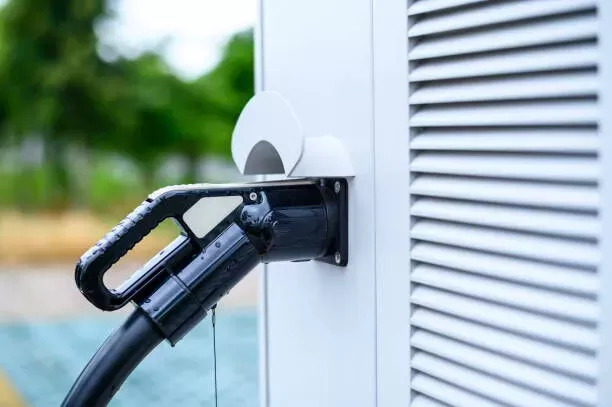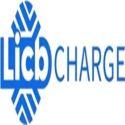Notifications

6 minutes, 42 seconds
-13 Views 0 Comments 0 Likes 0 Reviews

As electric vehicles (EVs) gain popularity, choosing the right home charging solution is crucial for both convenience and efficiency. A common decision EV owners face is whether to install a 32 Amp or 40 Amp Level 2 EV charger. Both offer faster charging than a standard wall outlet, but they differ in power output, installation requirements, and suitability based on driving habits.
In this guide, we’ll compare these two options in-depth to help you determine which best fits your home setup and EV needs.
The term “amp” (short for ampere) refers to the amount of electrical current flowing to your EV. Higher amperage means more power is delivered, resulting in faster charging times—provided your vehicle can accept the higher current.
A 32 Amp Level 2 EV charger typically provides around 7.7 kW of power when connected to a 240V circuit.
✅ Home-Friendly Installation: Most homes can support it without needing major upgrades.
✅ Overnight Charging: Ideal for average commutes (30–50 miles/day), recharging in 8–12 hours.
✅ Broad Compatibility: Works with most EVs (Tesla with adapter, Chevy Bolt, Nissan Leaf, etc.).
✅ Cost-Effective: Requires a 40 Amp circuit (20% buffer), lowering equipment and labor costs.
💰 Affordable: Lower cost for both charger and installation.
🛠️ Easy to Install: Minimal upgrades for most modern homes.
🚗 Sufficient for Daily Use: Great for moderate battery capacities and daily commutes.
🐢 Slower for Large Batteries: May not be ideal for high-mileage drivers or large EVs.
EV owners with mid-size batteries (e.g., Nissan Leaf, Chevy Bolt).
Drivers with overnight charging routines.
Homes with standard electrical panels.
A 40 Amp Level 2 charger delivers approximately 9.6 kW of power using a 240V circuit—20–25% faster than a 32 Amp charger.
⚡ Faster Charging: Adds 25–35 miles of range per hour, vs. 18–25 for 32A.
🔌 Higher Demand: Requires a 50 Amp circuit, possibly needing panel upgrades.
🔋 Great for Large Batteries: Ideal for long-range EVs like Tesla Model S or Rivian R1T.
🔄 Flexible: Allows for faster top-ups for drivers on the go.
🚀 Speed: Reduces charging time significantly.
🔮 Future-Proof: Supports new EVs with higher onboard chargers (up to 48A).
💸 Higher Cost: More expensive charger and potential upgrade requirements.
⚙️ Requires Panel Capacity: May not suit older homes without significant upgrades.
Long-distance or high-mileage drivers.
Owners of larger EVs with big batteries.
Homes with modern or upgraded electrical systems.
| Feature | 32 Amp Charger | 40 Amp Charger |
|---|---|---|
| Power Output | ~7.7 kW | ~9.6 kW |
| Range per Hour | 18–25 miles | 25–35 miles |
| Circuit Requirement | 40 Amp circuit (NEMA 14-50) | 50 Amp circuit |
| Installation Cost | $500–$1,200 | $800–$1,500+ |
| Charging Time (Tesla 3) | ~8 hrs (20–80%) | ~6 hrs (20–80%) |
| Home Compatibility | Good for most homes | May need electrical upgrades |
| Battery Size Compatibility | Small to Medium EVs | Medium to Large EVs |
Energy Consumption: Total energy used is similar, but 40A chargers pull more power in less time.
Peak Pricing Impact: Charging at higher amps during peak hours could increase energy costs.
Off-Peak Optimization: Use a smart charger or schedule overnight sessions to save on utility rates.
Both chargers are suitable for outdoor use, provided they meet these standards:
Weatherproof Enclosure: Look for NEMA 4 or better for rain, dust, and UV protection.
Certifications: UL-listed, Energy Star-rated units ensure safety and efficiency.
Proper Grounding: Always comply with local electrical codes.
You drive less daily (30–50 miles).
Your EV has a smaller battery.
Your home can’t easily support a 50A upgrade.
You want lower installation costs.
You need faster charging between trips.
You own a long-range EV (e.g., Tesla Model Y, Mustang Mach-E).
Your panel supports (or can be upgraded to support) 50 Amps.
You want future flexibility for newer EVs.
A: Yes, the charger will only draw its rated 32A. You can use a NEMA 14-50 or 6-50 outlet.
A: No. EVs are designed to handle Level 2 charging safely. Fast DC charging has more impact than AC.
A: Yes, but you may need to replace wiring and breakers, which adds cost.
The right EV charger depends on your daily driving needs, vehicle type, and home electrical capacity.
🟩 For typical drivers with smaller EVs and standard panels, a 32 Amp charger is cost-effective and sufficient.
🟦 For high-mileage drivers or future-proofing, a 40 Amp charger offers faster, more flexible charging.
Before making a purchase, always consult a licensed electrician to evaluate your home's system and ensure a safe, code-compliant installation.Know more about Google SEO Directory
China EV Chargers EV Charger Manufacturer Smart EV Chargers Electric Car Chargers Electric Vehicle Chargers Electric Car Charging Stations

